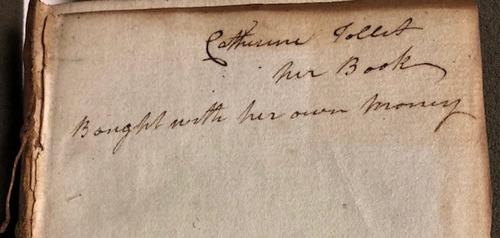
By Eileen Horansky
The provenance, ownership inscriptions, and other markings made in books by their previous owners offer researchers important clues as to how readers interacted with books, including how books were acquired, read, and shared. W.S. Lewis himself is an excellent case study in provenance markings–he copiously annotated the majority of his books with acquisition information and other related notes. Recording these tracings in our catalog records not only aids scholars in their research, but also helps us to identify unique copies in the LWL collection. Efforts to update the LWL catalog with more complete bibliographic information have uncovered a number of previously uncataloged inscriptions that are now traced and transcribed, including many inscriptions of female owners and readers. Provenance tracings like these are especially important for researching the history of female book ownership and reading practices, and including these tracings in the LWL catalog makes this information readily available for scholars and contributes to the corpus of knowledge about the various roles of women in book history.
You can read more about one of these newly-traced inscriptions in the recent blog post “Hester Chapone, Miscellanies in Prose and Verse (1777)” at https://earlymodernfemalebookownership.wordpress.com/.
Eileen Horansky